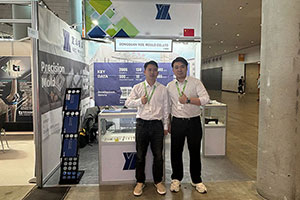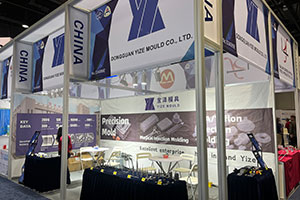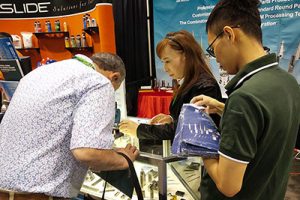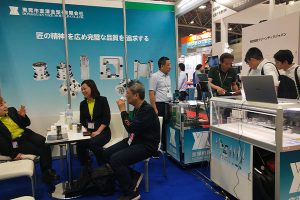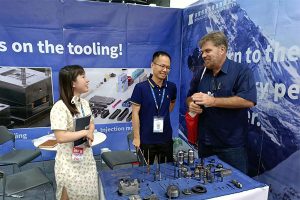Unlocking the Secrets to Prolonging the Service Life of Tungsten Carbide Parts
Tungsten carbide parts are indispensable key components in numerous fields such as mechanical processing, mold manufacturing, and aerospace, thanks to their excellent properties like high hardness, high strength, and good […]
Tungsten carbide parts are indispensable key components in numerous fields such as mechanical processing, mold manufacturing, and aerospace, thanks to their excellent properties like high hardness, high strength, and good wear resistance. However, tungsten carbide parts are expensive. If not used or maintained properly, they are prone to problems such as wear, chipping, and even fracture, which significantly shorten their service life and increase production costs for enterprises. So, how can we extend the service life of tungsten carbide parts? Here is a detailed introduction for you.
1. Rational Selection, Matching Working Conditions
There are various types of tungsten carbide, and different grades vary in hardness, toughness, and wear resistance, making them suitable for different working conditions. Therefore, when selecting tungsten carbide parts, it is essential to fully consider the actual working environment.
Nuestra actividad de fábrica: piezas de carburo, piezas de molde, moldes de inyección médica, moldes de inyección de precisión, moldeo por inyección de teflón PFA, accesorios de tubo PFA. correo electrónico: [email protected],whatsapp:+8613302615729.
If the parts need to withstand large impact loads, such as drill bits in mining and hammer heads in crushers, it is advisable to choose tungsten carbide grades with good toughness. These tungsten carbides are less likely to fracture under impact, ensuring the reliability of the parts in harsh working conditions. On the contrary, for parts mainly used in high-speed cutting with extremely high wear resistance requirements, such as cutting tools for CNC machine tools, tungsten carbides with high hardness and good wear resistance should be selected to reduce tool wear and extend their service life.
In addition, attention should be paid to the working temperature of the parts. In high-temperature environments, the performance of tungsten carbide may change, and some grades may soften, leading to a decrease in hardness and wear resistance. In this case, tungsten carbide materials with good high-temperature performance should be selected to ensure that the parts can maintain stable performance at high temperatures.
2. Standardized Installation, Ensuring Precision
The installation quality of tungsten carbide parts directly affects their service life. Incorrect installation methods may cause uneven stress distribution and stress concentration in the parts, accelerating their damage.
When installing tungsten carbide parts, it is crucial to ensure the flatness and cleanliness of the mounting surface. The mounting surface should be free of burrs, oil stains, and impurities; otherwise, it may affect the installation accuracy and stability of the parts. The mounting surface can be polished with sandpaper or grinding tools and cleaned with a cleaning agent.
Secondly, it is necessary to strictly follow the installation instructions and use appropriate installation tools and methods. For parts requiring interference fits, processes such as hot mounting or cold mounting should be adopted to ensure that the parts are installed in place without being damaged by excessive installation forces. At the same time, attention should be paid to the installation direction and position of the parts to avoid installation errors.
In addition, after installation, the accuracy of the parts should be inspected, such as runout and parallelism, to ensure that they meet the design requirements. If the accuracy is out of tolerance, adjustments or part replacements should be made on time to avoid affecting the normal operation of the entire equipment.
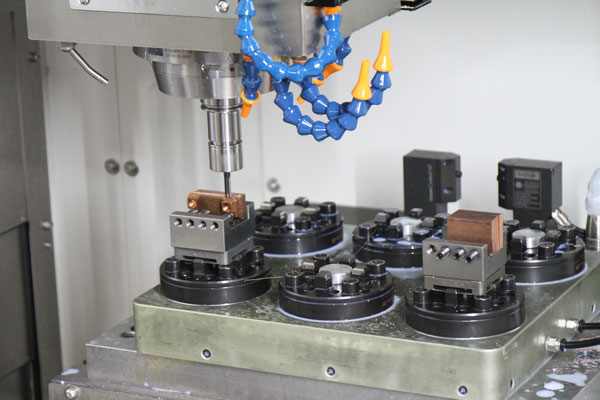
3. Optimized Usage, Controlling Parameters
Reasonably controlling the working parameters during the use of tungsten carbide parts is the key to extending their service life.
Cutting speed, feed rate, and cutting depth are three important parameters in cutting processing, which have a significant impact on the wear and service life of tungsten carbide tools. Generally, a too-high cutting speed will lead to an increase in tool temperature, accelerating tool wear and oxidation; a too-low cutting speed will increase the cutting force, increasing the risk of tool chipping. Therefore, an appropriate cutting speed should be selected based on the material of the tungsten carbide part, the geometric parameters of the tool, and the properties of the workpiece material.
The feed rate and cutting depth also need to be reasonably controlled. Excessive feed rates and cutting depths will subject the tool to large cutting forces, easily leading to accelerated tool wear and even fracture. In actual processing, the optimal feed rate and cutting depth can be determined through experiments and experience to improve processing efficiency and tool service life.
In addition to cutting parameters, the cooling and lubrication conditions should not be overlooked. Good cooling and lubrication can reduce the tool temperature, decrease the friction between the tool and the workpiece, and thus extend the tool service life. During processing, an appropriate cooling and lubricating fluid should be selected, and it should be ensured that it is fully sprayed onto the cutting area. For some high-speed cutting processes, advanced cooling and lubrication methods such as oil-air lubrication or minimum quantity lubrication can also be adopted to further improve the cooling and lubrication effect.
4. Regular Maintenance, Timely Repair
Regularly maintaining and inspecting tungsten carbide parts can help promptly identify potential problems and take corresponding measures to prevent them from worsening.
Establish a regular inspection system and inspect tungsten carbide parts at specified intervals. The inspection内容包括(can be translated as “includes” in this context) the wear condition of the parts, whether there are cracks, deformations, and other defects. Magnifying glasses, microscopes, and other tools can be used for detailed observation of the parts. Non-destructive testing techniques, such as ultrasonic testing and magnetic particle testing, can also be employed to detect internal defects in the parts.
If slight wear or damage is found on the parts, timely repair should be carried out. For parts with surface wear, methods such as grinding and polishing can be used for repair to restore their surface accuracy and smoothness. For parts with cracks, appropriate repair measures should be taken according to the severity of the cracks, such as welding or bonding. However, it should be noted that the repaired parts should be re-tested for performance to ensure that they meet the usage requirements.
In addition, proper storage and preservation of the parts should be carried out. Tungsten carbide parts should be stored in a dry, ventilated, and corrosion-free gas environment to prevent moisture absorption, rusting, and impact from external forces. For parts that are not used for a long time, anti-rust oil should be applied for protection.
5. Personnel Training, Enhancing Awareness
Extending the service life of tungsten carbide parts not only requires technical measures but also improving the professional quality and responsibility awareness of operators.
Enterprises should regularly organize training for operators to familiarize them with the performance characteristics, usage methods, and maintenance points of tungsten carbide parts. The training content can include the properties of tungsten carbide materials, the selection of tool geometric parameters, the optimization of cutting parameters, the operation specifications of equipment, and the maintenance and care of parts. Through training, the skill level of operators can be improved, enabling them to correctly use and maintain tungsten carbide parts.
At the same time, a sound assessment mechanism should be established to evaluate the work performance of operators. Operators who perform well in the use and maintenance of tungsten carbide parts should be rewarded, while those who cause part damage due to improper operation should be punished accordingly. In this way, the responsibility awareness of operators can be enhanced, prompting them to pay more attention to the use and maintenance of tungsten carbide parts.
Extending the service life of tungsten carbide parts is a systematic project that requires comprehensive efforts in rational selection, standardized installation, optimized usage, regular maintenance, and personnel training. Only in this way can we fully leverage the performance advantages of tungsten carbide parts, reduce enterprise production costs, and improve production efficiency and product quality. I hope the above content can be helpful to you. Let’s work together to extend the service life of tungsten carbide parts!


